Kilmarnock South
A 300MW/600MWh battery storage project in Kilmarnock, supporting the uptake of renewable power.
Kilmarnock South Battery Energy Storage System (BESS)
Following the granting of planning permission by the Energy Consents Unit, construction of Kilmarnock South Battery Energy Storage System began in January 2024.
We expect the site will enter commercial operation in November 2025.
300MW /
600MWh
battery to reduce wasted wind energy
c. 3.4m
tonnes of CO2 prevented over first 15 years of operation
3rd site
of £750m portfolio to go into construction
Construction overview
The programme below highlights the main stages in the construction process starting with enabling works, through to the site becoming fully operational.
For any questions, please contact the Kilmarnock South project team.
Project programme
December 2023
Enabling works – complete
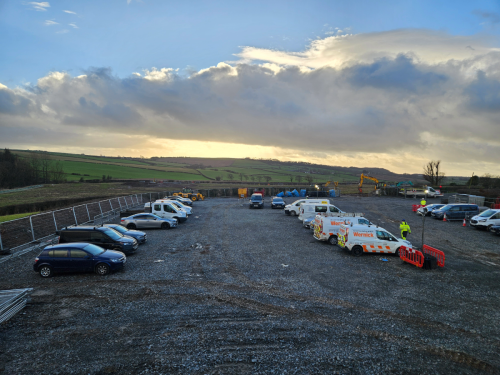
Temporary construction compound at Midton of Balgray
The enabling works were completed in December 2023. This work involved the construction of passing places on the C53 and built a new entrance into the site.
We also installed a temporary construction compound at Midton of Balgray and installed silt traps near Mugglesland Burn. Finally we also erected temporary security fencing and CCTV cameras around the perimeter of the site.
Earthworks – 95% complete
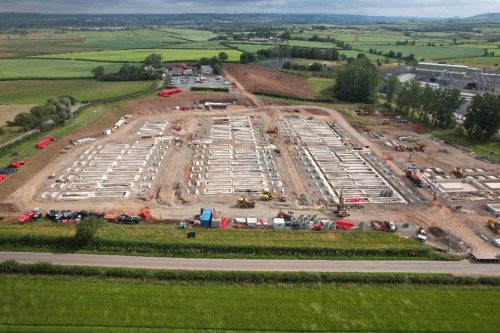
Aerial view of Kilmarnock South BESS
Earthworks activities included the clearing of vegetation and topsoil, excavation and reshaping of subsoil to create a gentle slope onto which aggregate is placed to create a level platform to support the batteries.
The earthworks was the most traffic-intensive phase of construction due to the volume of soil that had to be removed from site and the amount of aggregate that had to be brought in to the site to create the platform.
These works are now 95% complete with a small remainder of earthworks to be carried out as the foundation installations are completed.
All surplus soil excavated from the site is being used to create a new habitat area in Midton.
Civils work including laying of foundations, drainage and cable ducts – ongoing
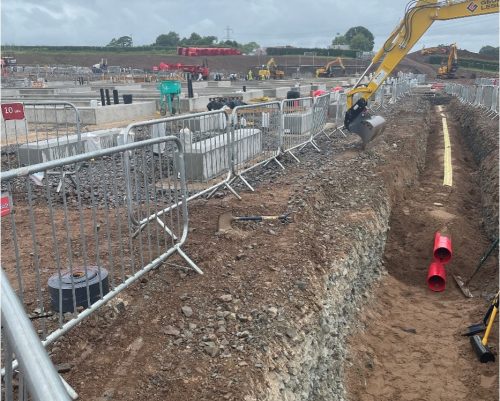
The Civils phase comprises of the installation of foundations, permanent drainage infrastructure and cable trenches.
The components of the battery energy storage system will be installed on concrete foundations. Some of the foundations will be cast in-situ which will require ready-mixed concrete to be delivered to site using mixer vehicles.
Other foundations will be pre-fabricated and will be delivered to site via HGV and simply lifted into position with a crane.
During this phase the permanent drainage system will be installed across the site. This will comprise of the installation of trenches and pipes and the creation of an attenuation pond to collect surface water run-off.
The civils work started in April 2024 and is expected to continue until September 2024.
Cable route installation – complete
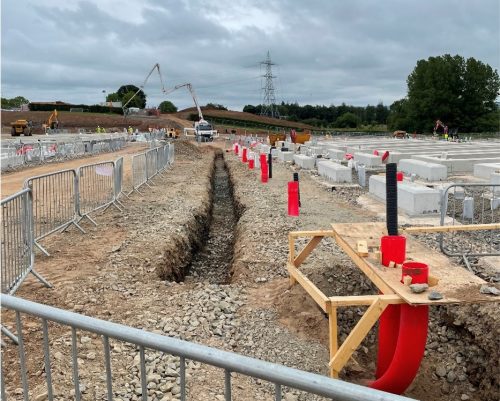
The cable which connects the battery site to the neighbouring substation was installed by a combination of horizontal directional drilling (HDD) and open-trench excavation.
The cable drilling and trenching works are now complete and there is now a duct connection between the Battery Storage compound and the adjacent substation.
August – December 2024
Abnormal load deliveries
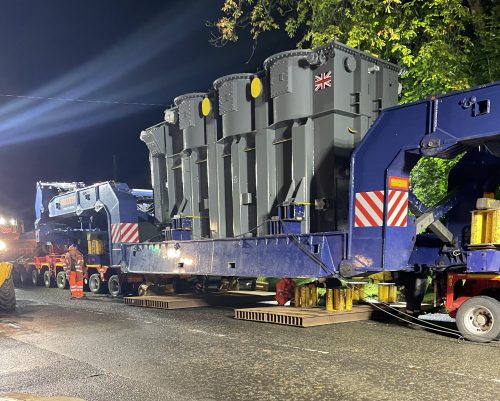
Delivery of HV transformer to site
While most plant and equipment will be delivered to site using HGVs, the two high voltage super grid transformers and the two medium voltage switch rooms are classed as abnormal loads and will be delivered to site using specialist delivery vehicles under police escort.
We are working with East Ayrshire Council and Ayrshire Roads Alliance to ensure the abnormal loads are delivered to site safely and with minimal disruption to other road users. Both HV transformer deliveries are now complete. The switch rooms are due to be delivered to site in December 2024.
The date of the next abnormal load delivery will be posted here when confirmed.
November 2024 – February 2025
Equipment installation
Delivery and installation of the batteries units and other electrical equipment is expected to begin in November 2024 and is expected to take five months.
The batteries and other equipment will be delivered to site using HGVs and will be craned into position and installed on the foundations.
Permanent fencing will be installed during this phase and some of the landscape planting will be undertaken in this time.
We expect there will be a maximum of approximately 15 deliveries of the battery equipment per day over this five-month period.
February – November 2025
Commissioning & energisation
Once the equipment has been installed on-site there follows an extensive period of connecting the equipment together and testing it to ensure it complies with all protocols and policies and operates as planned.
The commissioning phase is expected to take approximately eight months, commencing in February 2025. Once commissioning is complete, the facility will be energised in November 2025 and will enter commercial operation.
Most of the traffic during the commissioning and energisation phase will involve cars and vans with the occasional light or heavy goods vehicle.
Once the site is energised, the temporary construction compound equipment will be decommissioned and all remaining construction equipment and material will be removed from the site.
November 2025
Operation
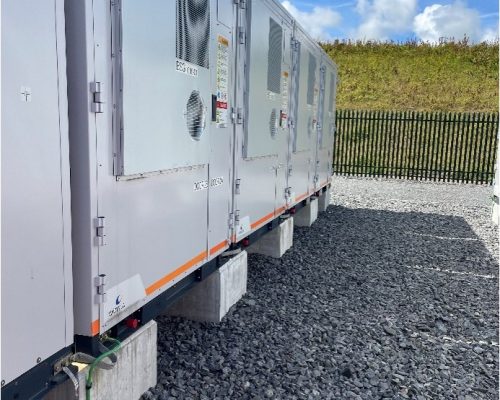
Zenobē’s BESS site in Blackhillock, Scotland nearing energisation
The Kilmarnock South BESS will deliver essential services to run the UK’s electricity network more efficiently for the next 40 years.
The operational maintenance requirements are very low so there will be minimal vehicle movements to and from the site once construction is complete and the site is fully operational.
Who are Zenobē?
Zenobē designs, builds and operates battery energy storage systems (BESS) that maximise the uptake of renewable power, ensuring it does not go to waste and can power our homes and our transport.
Founded in the UK in 2017, we will deliver 1.2GW worth of battery storage projects by 2026.
We’re investing £750m into the Scottish electricity transmission network over the next three years, to 2026. These sites will save more than 1 billion tonnes of CO2, over their 15 years of operation.
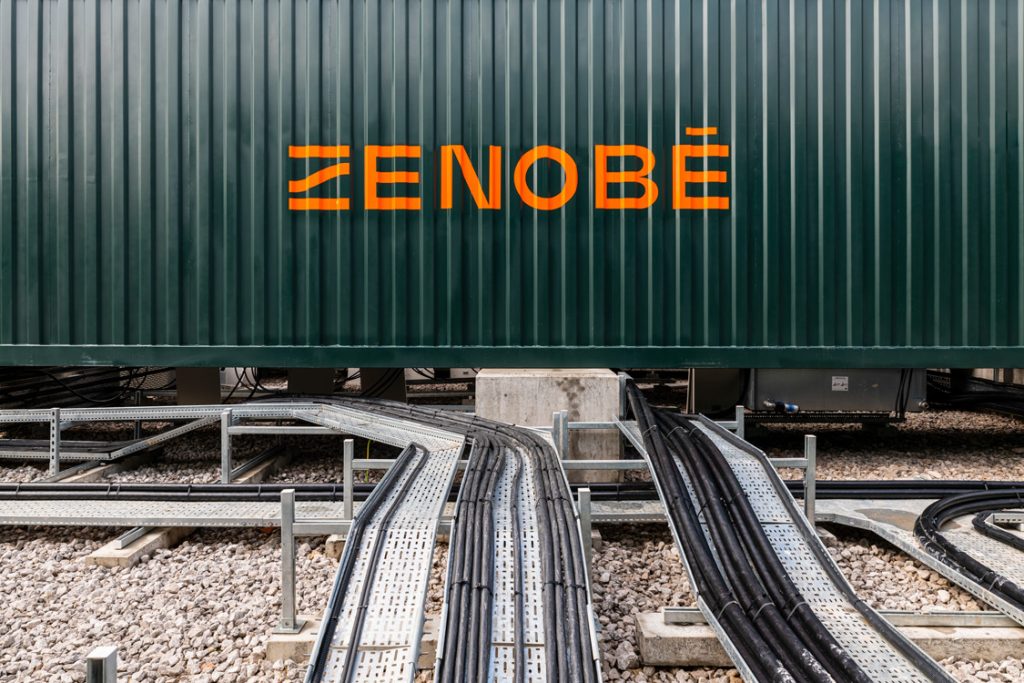
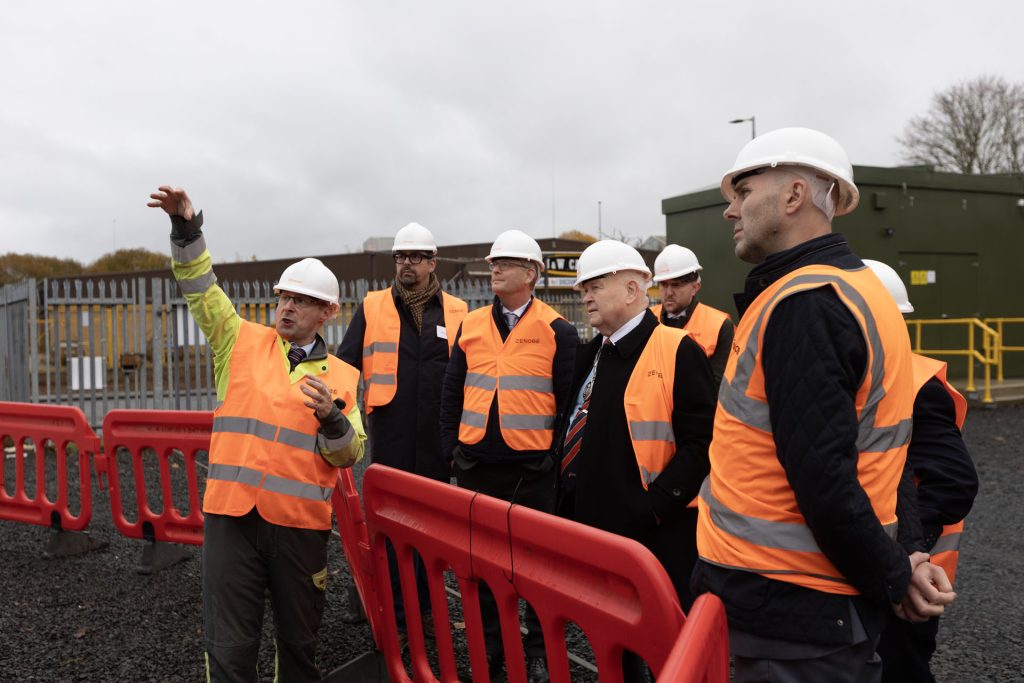
Scotland's commitment to net-zero
The Scottish and UK Governments have made a legal commitment to cut carbon emissions to net-zero. With the move away from fossil fuels, the demand for electricity will increase with the need to electrify transport, heating and more.
Battery storage plays a key role in helping the UK meet its net zero ambitions as it allows a greater amount of cheap renewable energy to be deployed whilst providing critical balancing and stability services without the need for traditional fossil power stations.
What is a grid-scale battery and what does it do?
Renewable energy is intermittent, which means that at any time there is a risk of generating too much or too little in relation to demand from homes, businesses and even transport.
Batteries provide what energy insiders call ‘flexibility’ – they offer us the ability to adjust supply and demand to balance the system. For example, if wind turbines are generating more power than needed, batteries store this surplus energy. When wind generation is low but demand is high, battery operators release the stored electricity back into the system, ensuring this energy is not wasted.
They also provide a wide range of additional services needed to maintain grid stability and keep the lights on.
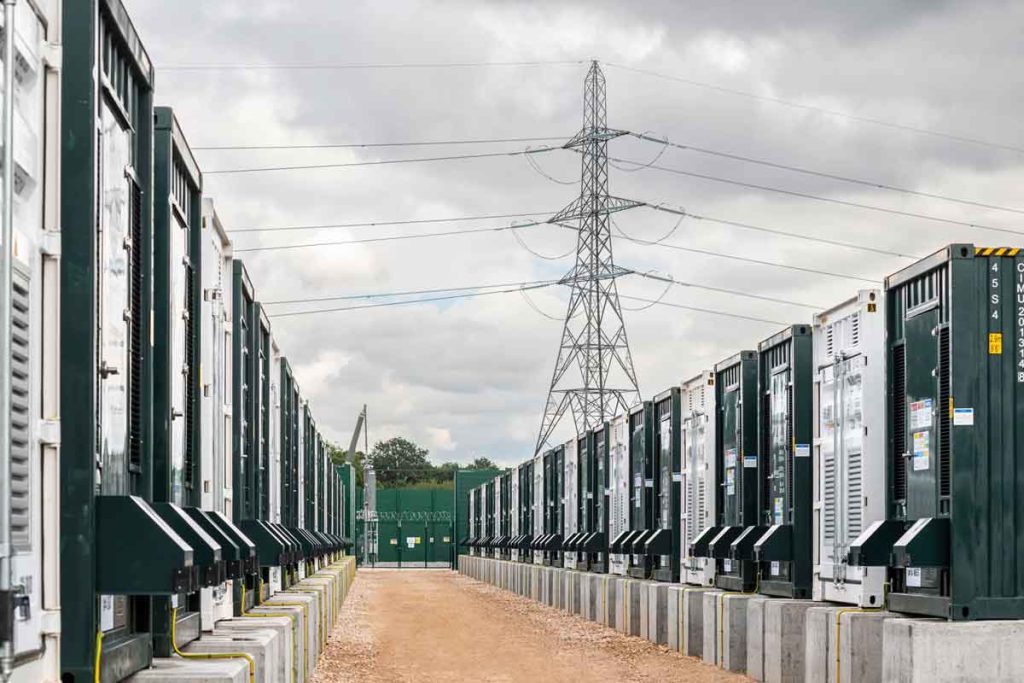
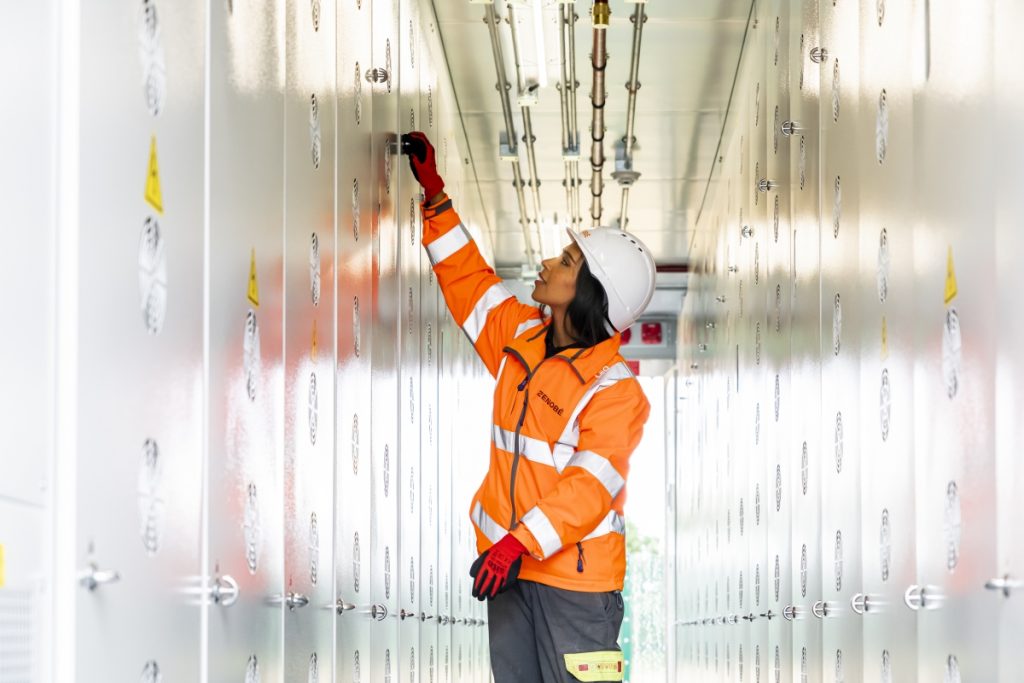
Why Kilmarnock South?
Kilmarnock South electricity substation is part of the 400kV electricity network responsible for transmitting renewable energy generated in Scotland to other parts of the UK where demand is greatest. The substation was identified by the National Grid Electricity System Operator as one of several strategic locations on the transmission network that required critical stability services.
Our battery storage solution will mimic the characteristics of a traditional power station to provide these critical services with a long-term contract with the Electricity System Operator from 2025 onwards.
Without storage schemes like Kilmarnock South, offshore and onshore wind and other renewable energy will be severely curtailed in the second half of this decade and fossil fuelled power stations will be called upon to deliver stability services.
We are currently developing a Kilmarnock South Community Benefit Fund, to provide the local community with an opportunity to apply for financial support for social enterprises and projects in the local area. Meetings to discuss this and all aspects of the project development are held by our project management team. Get in touch to find out when the next meeting is taking place.
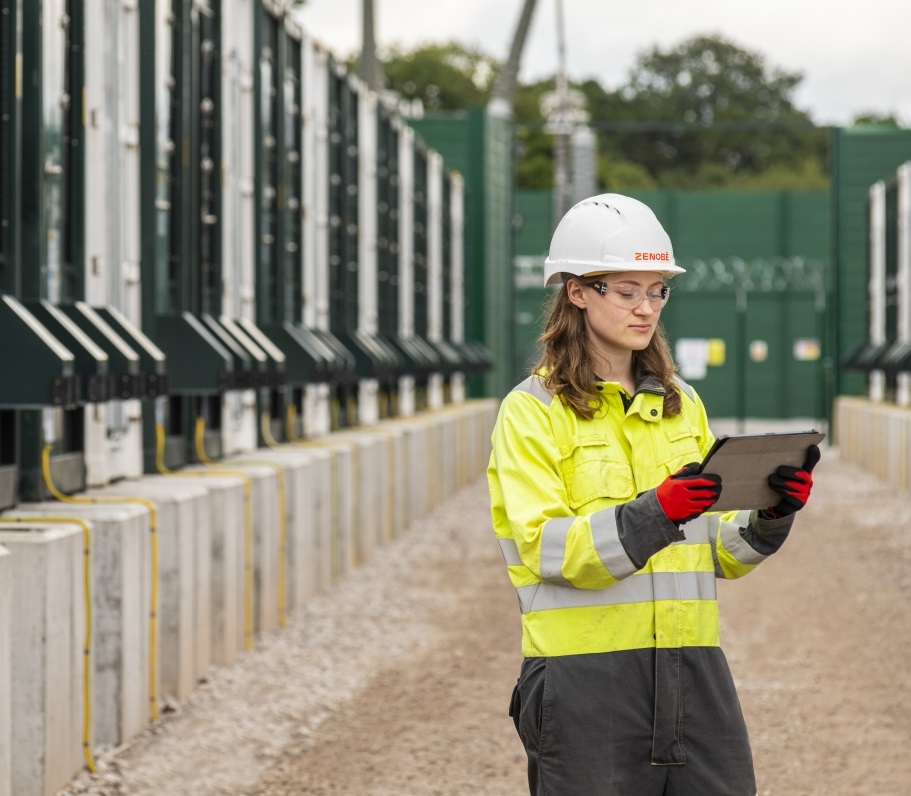
Do you have any questions?
Get in touch directly with our project team by emailing: ukprojects@zenobe.com
If you cannot find the document you are looking for, get in touch with our project development team by emailing ukprojects@zenobe.com
